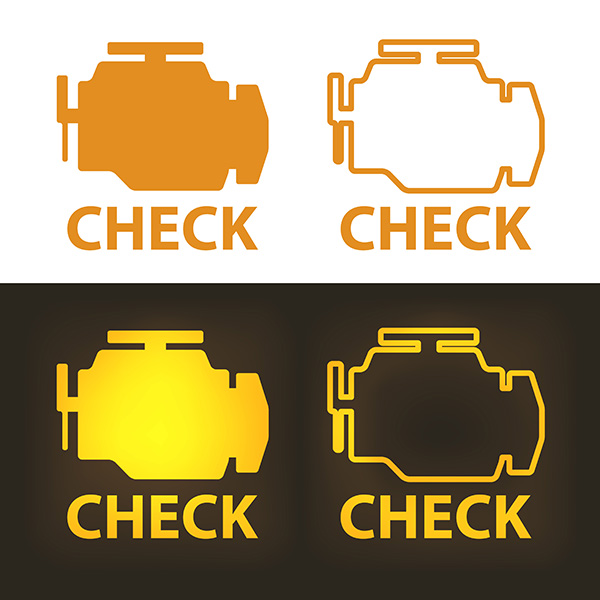
When the check engine light appears on your dashboard, it’s hard not to feel a little panic. Is it a minor issue or something that needs immediate attention? Understanding what your car is trying to tell you can make all the difference between a quick fix and a costly repair. So, can you drive with a solid or blinking check engine light?
1. What Does the Check Engine Light Mean
Your car’s check engine light is part of its onboard diagnostics system, designed to alert you when something is wrong with the engine or other critical components. It could be triggered by a wide range of issues, from a loose gas cap to more serious engine problems like misfires or emission control system failures. The key is understanding what the light is communicating and how urgent the problem might be.
The check engine light comes in two forms: a solid light and a blinking light. Both indicate that something is wrong, but the severity of the issue often depends on whether the light is steady or flashing.
2. Can I Drive with a Solid Check Engine Light
A solid check engine light generally means that there’s an issue, but it’s not an immediate emergency. In many cases, it could be something simple like:
- A loose or missing gas cap
- Faulty oxygen sensor
- Exhaust system issues
- Minor emission control problems
While it’s safe to drive for a short period, ignoring the light can lead to bigger problems down the road. If the issue is left unchecked, it can affect your car’s performance and fuel efficiency, causing more wear and tear on your vehicle over time. So, it’s best to get your car inspected as soon as possible to prevent any potential long-term damage.
3. What Does a Blinking Check Engine Light Mean
A blinking check engine light is a more serious warning. It typically indicates a misfire in the engine, which can damage your catalytic converter—a vital (and expensive) part of your car’s emission system. This misfire can cause unburnt fuel to enter the exhaust system, leading to overheating of the catalytic converter and potential failure.
If your check engine light is blinking, you should pull over and stop driving immediately. Continuing to drive with a flashing check engine light can lead to significant and costly engine repairs. In this situation, it’s critical to have your car towed to a repair shop to diagnose and fix the problem.
4. Common Causes of a Solid or Blinking Check Engine Light
Understanding the most common reasons why your check engine light might come on can help you react appropriately. Here are some issues that frequently trigger the warning:
Loose or Faulty Gas Cap
Believe it or not, something as minor as a loose gas cap can trigger the check engine light. A secure gas cap is essential for maintaining proper fuel system pressure, and if it’s loose or damaged, the onboard diagnostics will detect it.
Faulty Oxygen Sensor
This sensor monitors the amount of unburned oxygen in the exhaust and helps regulate fuel injection and timing. A malfunctioning oxygen sensor can reduce fuel efficiency and increase emissions.
Catalytic Converter Issues
Your catalytic converter helps reduce harmful emissions. Problems with this component can lead to performance issues, overheating, or even complete engine failure if ignored.
Ignition Coil Failure
The ignition coil converts the battery’s voltage into a spark that ignites the fuel in the engine. If it’s faulty, it can cause misfires, which will trigger the blinking check engine light.
Spark Plug or Wire Issues
Old or worn-out spark plugs can lead to poor engine performance and even misfires, which are serious enough to cause a blinking check engine light.
5. What to Do When Your Check Engine Light Comes On
So, what’s the best course of action when your check engine light comes on? Here’s a quick checklist:
- Assess the Light: Is it solid or blinking? If it’s solid, you can drive cautiously but should make an appointment to have it checked. If it’s blinking, pull over and stop driving immediately.
- Check the Gas Cap: If your check engine light is solid and you recently filled up your tank, double-check the gas cap to make sure it’s securely tightened.
- Visit a Professional: Regardless of whether the light is solid or blinking, you’ll need a professional to diagnose the issue using specialized equipment. A repair shop can read the error codes stored in your car’s computer system and pinpoint the exact problem.
- Don’t Ignore It: Even if your car seems to be running fine, don’t ignore a check engine light. What starts as a minor issue can snowball into a major repair if not addressed quickly.
Not sure why your check engine light is on? At Wes Jackson Automotive, we’ll thoroughly inspect your vehicle and identify the issue before it gets worse. Contact us now for fast, reliable service.